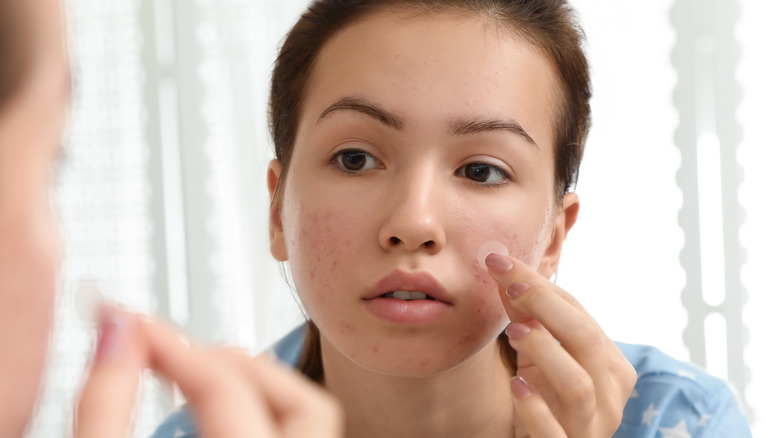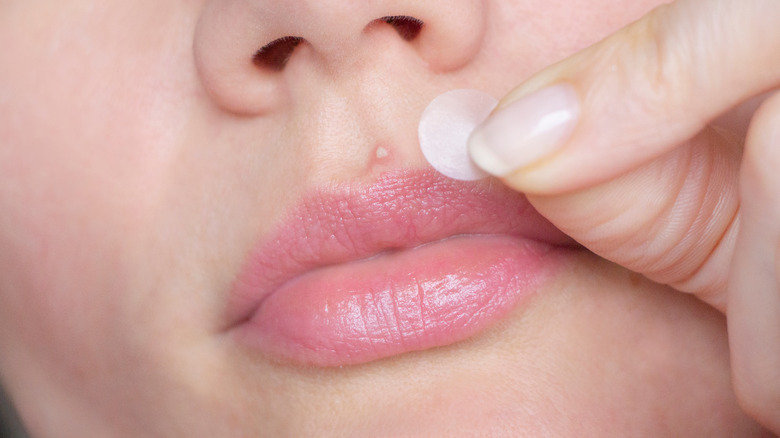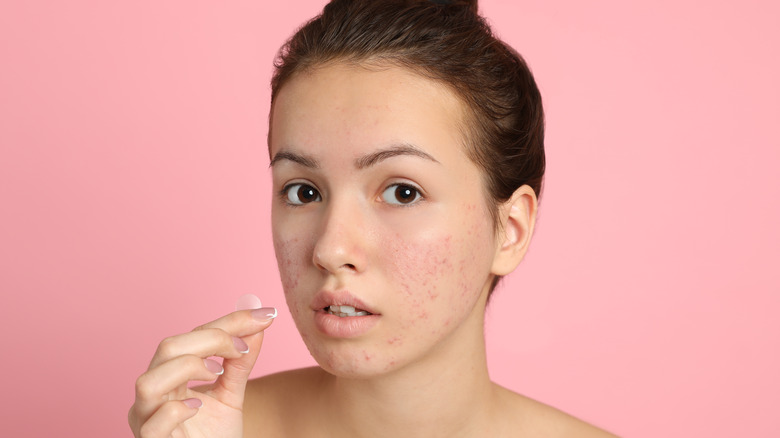This Is What Happens To Your Skin If You Leave A Hydrocolloid Patch On Too Long
Hydrocolloid patches are a fascinating invention used to conquer breakouts. These small pimple patches are placed on top of a blemish, promising to vanquish the blight while you go about your normal daily routine or even while you sleep. Acne can affect anyone at any point in their lifetime, per the Mayo Clinic, making it so universal that there is practically always a new acne treatment one can try. You may be wondering if these patches are just a fad, and considering many of us have forgotten pretty much everything we learned in high school chemistry, we can be left wondering what's even inside these tiny patches we so willingly put on our faces.
Dr. Nikhil Dhingra, a dermatologist at Spring Street Dermatology, told Men's Health, "Hydrocolloid is a unique material that's able to absorb extra moisture without drying the skin." Okay, so that sounds fine, right? But how does it actually work its magic? And what really happens if you were to leave it on all night or even longer? Let's take a look.
How hydrocolloid patches work
The "magic" of a hydrocolloid patch is really in the science. As explained to Well+Good by board-certified dermatologist Hadley King, "The hydrocolloid sheet works by absorbing excess fluid, and this pulls oil and dirt away from the pimple." So in other words, it whisks away all the icky stuff inside of the zit. That sounds great, and it means we should put one on every spot we see, right? Not so fast. As it turns out, not all pimples respond equally to these patches.
According to Dr. Morgan Rabach, a dermatologist from LM Medical, these patches are ideal for whiteheads, but not cystic acne that sits below the surface of the skin. "There has to be some connection to the fluid in the patch otherwise there is no way for the patch to access what's inside," the expert told Men's Health.
Timing also matters. "If you put one on before the pimple has popped and gotten infected by more bacteria, it will make the skin heal faster," Rabach confirmed. The best times to apply these patches is when a pimple is almost to the surface or has just popped. This way it can maximize its ability to absorb the fluids inside and subsequently prevent scarring.
There is a limit to how long a hydrocolloid patch should stay on
There is indeed a window of time when a hydrocolloid patch works best. The most common time to use this social media favorite is overnight. Thankfully, this is fine to do. But what if your pimple is not gone yet when you wake up? Should you leave the patch on for a whole day? Probably not. As Dr. Dhingra told Men's Health, "If you keep it on for 24 hours, the absorption capabilities are limited." If your pimple persists, you can remove the patch, wash the area, and apply a new one.
However, you might want to give your skin a breather first. One issue with wearing an acne patch too long is that you may end up replacing one skin issue with another. According to dermatologist Dendy Engelman, who spoke with Well+Good, "The adhesive on that patch could potentially irritate over time."
For this reason, you should consider removing your patch after a max of 12 hours, and always cleanse your face before applying a hydrocolloid patch. After all, the last thing you'd want is a rash where acne used to be.


